- The influence chain: Attention → Relevance → Trust → Action
- The MENA FMCG Landscape: Why Design Choices Matter
- Influence Map vs. the Linear Funnel
- Diagram call-out (simple schematic to include in the document)
- Practical takeaway
- Phase 1 - Awareness: Creatives that Win the Scroll
- Phase 2 - Consideration: Creatives that Build Preference
- Phase 3 - Action: Creatives that Convert
- Design Elements That Resonate in the Middle East
- Mobile-First Design Principles for FMCG
- Measuring Creative Effectiveness by Phase
- Awareness
- Consideration
- Action
- Testing system (keep it light, weekly)
- Analytics stack & cadence
- KPI Cheat Sheet (Dashboard Labels)
- How Lamana Translates Strategy into Visuals
- An example of systematic design by Lamana digital marketing agency
- What we need from clients to move quickly and stay accurate
- Conclusion: Design Is a Growth Engine
In the MENA FMCG market, decisions don’t follow a simple funnel. People scroll, search, compare, and shop across social platforms, marketplaces, and retail media surfaces, often all in one session. In this nonlinear environment, creative design is the most controllable lever: when it consistently grabs attention, signals relevance, and builds trust, it encourages people to move from scrolling to shopping. BCG updates this with an Influence Map that emphasizes influence (attention + relevance, and trust) over sheer reach, and shows how to identify consumer touchpoints that guide decisions.
The influence chain: Attention → Relevance → Trust → Action
- Attention: Capture attention within the first 1-2 seconds with motion, human presence, or a distinctive visual hook; introduce brand elements early to facilitate recognition as frequency increases. (BCG highlights attention, relevance, and trust as the main drivers; YouTube’s ABCD framework demonstrates how to hook and brand early.)
- Relevance: Make one clear promise tied to a specific usage moment (e.g., Iftar gatherings, school lunchboxes, summer heat). Use vertical-first framing with a single message per asset; creator-native formats often work well.
- Trust: Bridge credibility gaps quickly by utilizing ratings, UGC/testimonials, certifications (e.g., halal, dermatologist-tested), and providing clear product facts. A consistent look and feel across placements reinforces authenticity.
- Creative quality predicts outcomes: Meta-analyses from Nielsen show that creative is the single most significant driver of sales lift, often accounting for around 47–49% of incremental sales across channels (see also the summary).
- Fluency & memory: Repeating Distinctive Brand Assets (color, logo, sonic, and pack cameo) as cues across short-form video, display, and retail media enhances processing fluency and boosts VTR/CTR.
- Algorithmic advantage: Assets that quickly capture attention tend to win auctions and lower cost-per-outcome; a creative that uses ABCD hooks and strong branding generally performs better.
- Testability: Modular layouts (hook → claim → proof → CTA) allow fast A/B testing without reshoots, speeding up the learn → scale cycle.
The MENA FMCG Landscape: Why Design Choices Matter
Here are the key facts you need to know about the MENA FMCG market.
- Fragmented channels: TikTok, Reels, YouTube Shorts, Snap, programmatic video, retail media (Amazon.sa, Noon, Instashop, Carrefour), and quick-commerce apps.
- Bilingual audiences: Arabic/English variants; RTL/LTR layout implications and dialect nuance (Khaleeji, Levant, Egyptian).
- Price sensitivity & promos: Value frames (bundle, family size, trial pack) and clear price-per-unit tiles influence basket decisions.
- Fast cycles & seasonal peaks: Ramadan/Eid, National Days, back-to-school, and heat-season hydration demand rapid creative refreshes.
- Retail constraints: PDP and retail-media units require strict specifications; hero images must clearly indicate variant/size at a glance.
- Packaging’s role: Use the pack as a brand cue (thumbnail/hero, unboxing), but let the story and benefit carry the asset, especially on mobile.
Influence Map vs. the Linear Funnel
Classic funnels assume a smooth journey from awareness to purchase. In reality, MENA shoppers jump between touchpoints-streaming a short video, scrolling social media, searching, landing on a PDP, then returning to social media often within minutes. BCG redefines this behavior with an Influence Map that emphasizes the compound effect of attention, relevance, and trust over raw reach, demonstrating how to map the touchpoints that truly influence decisions.
What the Influence Map implies
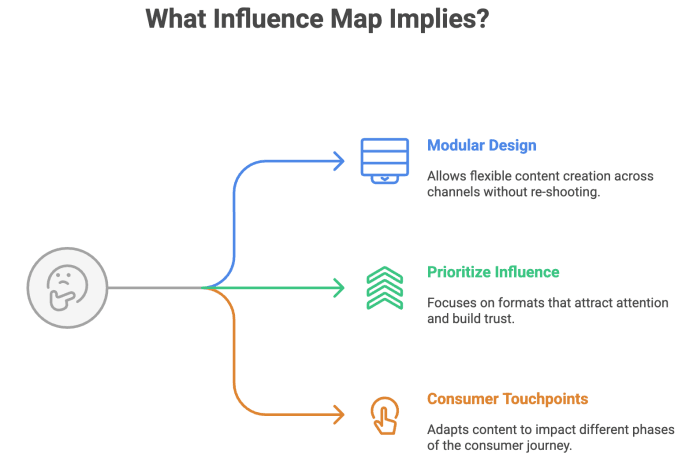
- Consumers move across touchpoints: the same ad or PDP can impact different phases depending on context (e.g., a creator video can both introduce and reassure).
- Design should be modular and channel-specific: create assets as “atoms” (hook, claim, proof, CTA) that can be remixed into the key touchpoints. This includes short-form video, search, retail media, and PDPs, without re-shooting.
- Prioritize influence over impressions: choose formats that consistently attract attention, feel timely, and build trust signals like ratings, certifications, and UGC.
Diagram call-out (simple schematic to include in the document)
Create a one-page diagram titled “Influence Map: Stream · Scroll · Search · Shop." Use bidirectional arrows to indicate non-linearity. Label nodes by surface type.
- Owned: Website/App, Email/CRM, Content Hub, PDP
- Paid: TikTok/Reels/Shorts (vertical video), YouTube, Display/Programmatic, Search
- Retail: Retail Media Banners, Sponsored Product, PDP Hero/Gallery, Shoppable Video
Under each node, add small badges for Attention / Relevance / Trust and check the ones the asset is meant to deliver. For each node, include small badges for Attention, Relevance, and Trust, and select the badges that apply to the asset's intended delivery.
Practical takeaway
- Plan by moments and mindsets, not in a strict order: identify the shopper’s moment (for example, Iftar planning, school lunch, summer heat) and mindset (discovering, comparing, ready to buy), then select touchpoints accordingly.
- Create modular, channel-specific creatives: combine hook, claim, proof, and CTA elements into vertical videos, carousels, and PDP modules that target key touchpoints.
- Measure influence by phase: optimize for attention (top), relevance/engagement (middle), and trust/conversion (bottom) rather than only CPM/CPA aligned with influence-first planning.
Phase 1 - Awareness: Creatives that Win the Scroll
At the beginning of the journey, the goal isn’t just “spray and pray.” It’s to capture attention quickly and make the brand mentally accessible for what’s coming next. In MENA’s non-linear journeys, people jump from stream to scroll to search to shop; planning Awareness assets with influence (attention + relevance + trust) in mind outperforms planning by reach alone.
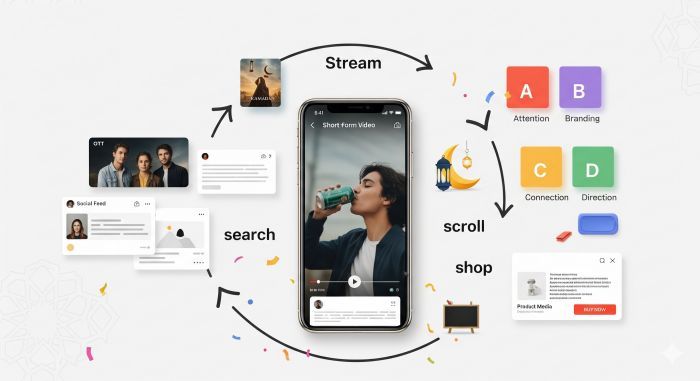
Think short-form, vertical, and native to the platform. TikTok/Reels/Shorts and YouTube’s high-impact areas reward creatives that hook viewers immediately and brands early, precisely what YouTube’s ABCD framework defines as Attention, Branding, Connection, and Direction. Ads following ABCD tend to see about a 30% increase in short-term sales and a roughly 17% boost in long-term brand contribution, making creative execution a performance factor, not just an artistic choice.
Design the first 1-2 seconds with motion or a close-up of a person, use high-contrast visuals, and showcase key brand assets (logo, colors, sounds) immediately. Keep edits sharp with 9:16 vertical cuts and 6-10 second variants that are easy to sequence and rotate. Many viewers will watch with the sound on, but your message should also be effective in muted mode. Use brief overlays and captions to convey your message effectively. All these strategies are well-documented in Google’s creative playbooks for capturing attention, early branding, and storytelling techniques tailored to goals.
Local resonance is important. In the MENA region, bilingual assets (AR/EN) and dialect nuances (Khaleeji, Levant, Egyptian) enhance perceived relevance. Ramadan, Eid, National Day, and back-to-school moments offer clear cultural contexts for the hook. Use the pack as a cue-a quick, legible cameo for recognition let the benefit frame tell the story. This balance maintains brand fluency without turning Awareness into a packaging issue showcase.
Close the loop with lightweight retargeting from DOOH/OLV/social into social video, then into mid-funnel surfaces. For measurement, monitor thumb-stop rate, 3-second view rate, VTR, ad-recall lift, and cost per completed view. Together, these metrics indicate whether your Awareness assets are fulfilling their purpose: capturing attention and leaving a lasting impression so that search, PDPs, and retail media don’t have to start from scratch.
Phase 2 - Consideration: Creatives that Build Preference
If Awareness earns you a glance, Consideration earns you the right to be chosen. At this stage, the goal is straightforward: educate, reduce friction, and make reasons to believe memorable. Influence Map reminds us that people don’t move directly from A to B; they bounce between stream, scroll, search, and shop. So your mid-funnel creative should meet them where they are with formats designed for quick understanding and low cognitive effort.
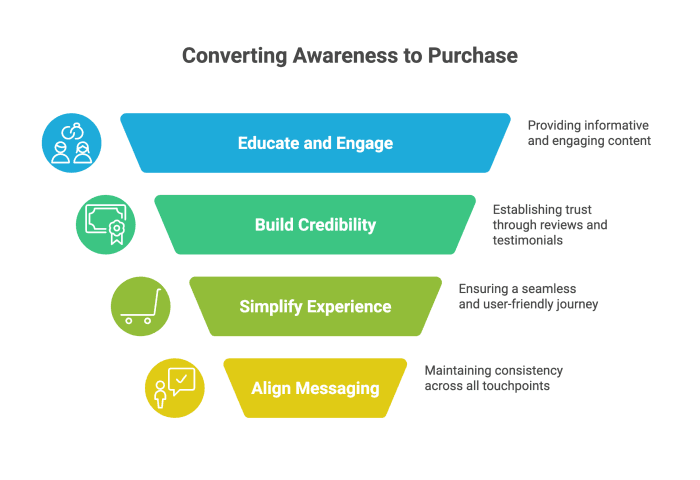
On social platforms, use carousel and collection (or other common types of formats for content marketng) formats to tell a mini-story: a problem your product solves, proof that it works, and the benefits consumers can expect. On YouTube, “how-to” and explainer videos serve as credibility builders when they follow platform-specific creative rules (capture attention quickly, clearly display the brand, and focus on one message per asset). When shoppers are already in a buying mindset, retail media becomes an ideal bridge. Sponsored Brands videos on Amazon can carry the same hook-claim-proof narrative directly into search results and direct viewers to a product detail page.
Keep the creative pattern focused: Problem → Proof → Payoff. Use split-screen demos and creator-style UGC (Arabic/English) to show the “job to be done” in everyday situations. Reviews and testimonials aren’t just decoration; they are essential tools for conversion. Research indicates that displaying reviews greatly increases the likelihood of purchase. See the Medill Spiegel Research Center’s findings on online reviews, and creator-led video often earns more trust along the buying journey.
Then, connect the click to an experience that tells the same story. Your PDP or landing page should be easy to scan in seconds, featuring a clear list of benefits, prominent star ratings, and trust badges (such as halal and dermatologist-tested).
Make the hero image gallery effective. Baymard’s extensive UX research shows that product images, especially in-scale shots and reviewer photos, impact evaluation; however, many sites fall short. Their latest product-page report explains what to fix and why it matters for an 'add-to-cart' decision. Since many Consideration clicks happen on mobile, page performance is part of your creative: faster pages not only improve user experience but also increase sales. See web.dev’s case study where a 100ms improvement led to a 0.5% lift in “Add to Cart” on eBay.
Finally, align the search with the story. Build Responsive Search Ads that reflect the same promise and proof assets and extensions should support what viewers just saw in the video or carousel, following Google’s RSA guidance and asset best practices. When your creative, PDP, and search copy are in sync, you reduce mismatch friction and increase the chances of a confident 'add to cart' decision.
What to watch: Click-through rate and save/share signals from carousels and videos tell you if the message resonates; LP scroll depth shows whether the landing page is scannable; add-to-cart rate and branded search lift confirm you’re converting attention into intent.
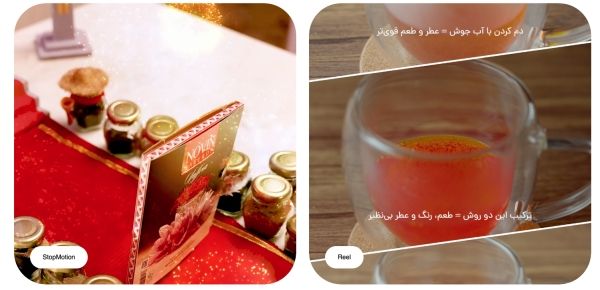
In a related example of what has been explained, Lamana marketing agency developed a design-first system for Novin Saffron to guide shoppers from curiosity to confidence. This system featured premium packaging and product visuals that were transformed into native banners and assets for Google Search and Display, all supported by social media content and campaigns. In less than three months, the program achieved approximately 60 million ad impressions, 76,000 display clicks, 4.5 million social impressions, and a 54% increase in Instagram followers. This serves as a clear illustration of the "Problem → Proof → Payoff" pattern in practice.
Explore: Iranian Saffron, More Global Than Ever.
Phase 3 - Action: Creatives that Convert
When people are just one tap away from making a purchase, the creative's role shifts: to clear doubts, highlight the value, and prompt the click. Think of your lower-funnel surfaces as decision interfaces—such as PDP hero galleries, shoppable videos, in-app grocery placements, and coupon units. All of these should communicate the same “why now” message with minimal cognitive effort. On PDPs, clarity is key: display unit pricing, total price/discount, and return/delivery guarantees exactly where the viewer's eyes fall. Baymard demonstrates that making price per unit visible and keeping discounts clear and straightforward reduces comparison friction, while linking return and shipping info is a proven way to lower abandonment.
Lower-funnel media should coordinate with the PDP to ensure consistency in the promise at the point of click. On YouTube, link a product feed to Video Action/Shopping formats so your ad becomes a mini-storefront. Google reports that advertisers who add feeds see over 60% more conversions at a lower cost, and the newer shoppable CTV product feed enhances that “browse then buy” flow onto the living room screen. On TikTok Shop, use the Product Sales objective and Video Shopping Ads to keep the cart native, with catalog items, prices, and CTAs displayed within the video, enabling immediate action.
For in-app grocery and retail media in the MENA region, meet shoppers where they already shop. Noon offers onsite Product Ads and Brand Ads to turn search and browse intent into orders; Carrefour (Majid Al Futtaim) has developed an omnichannel retail media network with precise targeting and in-store or online links via Precision Media and Advertima Audience AI; and talabat is increasingly combining commerce signals with media to optimize for measurable outcomes. These platforms reward creativity by clearly showing availability, delivery times, and savings at a glance.
Structure the creative pattern around urgency and proof. Lead with a “why now” frame, offering limited-time deals, bundles, trial sizes, and ensure the offer is both machine-readable and human-readable. On Meta, Advantage + catalog ads (formerly DPA) enable you to retarget product viewers and reach broader audiences. Combine them with dynamic overlays, allowing price, percentage-off, free shipping, and other offers to appear as sticker-style labels that the algorithm can optimize. Keep CTAs direct and channel-specific: “Add to Cart,” “Order in App,” “Shop on Noon/Amazon.”
Finally, make your offers concrete so that people can make a decision. If you sell on Amazon, use Coupons so the green badge displays the promo all the way to the PDP and search results; keep pack size and price-per-unit very clear so “value math” doesn’t hurt momentum, as Baymard’s PDP findings highlight. On retail media, Sponsored Products/Brands should reuse the exact benefit and offer language from PDP and shoppable video to ensure zero message mismatch.
What to measure: Concentrate on conversion rate and cost metrics (CPP/CPA), while also protecting long-term growth with ROAS and new-to-brand. Amazon offers new-to-brand metrics, allowing you to see how many first-time customers your lower-funnel creative attracts, not just how well you tapped into existing demand. When your PDP clarity, shoppable formats, and offer mechanics align, you’ll see increases in basket size, especially where bundles and unit-price benefits are evident.
Design Elements That Resonate in the Middle East
Design that works across MENA begins with language and layout. A bilingual (AR↔EN) system isn’t just translation; it’s structural. Interfaces and creative frames should be mirrored for RTL so hierarchy, motion, and “forward” cues read right-to-left, while Latin snippets and numbers retain their native directions. Refer to Google’s guidance on bidirectionality and UI mirroring, the W3C’s Arabic & Persian layout requirements (including numeral rules like percent-sign placement), and the UAE’s public typography standards for practical scales and weights that ensure Arabic text remains legible on small, mobile-first screens.
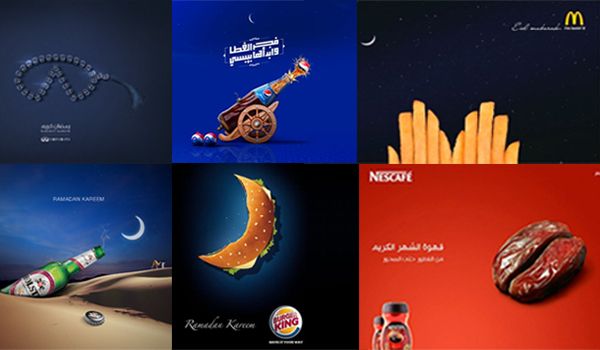
Color and symbolism hold additional significance. Green has deep spiritual and cultural connections and is frequently featured in national symbols, which is why Saudi National Day themes often highlight it; see the GEA’s annual official identity guidelines and background on green’s importance in Islamic contexts. Gold signifies luxury and heritage cues in many Arabic-focused interfaces; region-specific UI guides outline how color palettes can shift meaning in MENA and why restraint (rather than over-saturation) improves brand clarity. Importantly, adhere to local content standards. The UAE’s regulator emphasizes boundaries around public morality and religious respect to ensure creative choices do not accidentally cross lines.
Story themes that resonate most are family, hospitality, and community, especially during Ramadan and Eid. Video and creator content increase during that season, as audiences seek connection, cooking, and giving. Think with Google’s Ramadan analysis and TGM data show how customizing stories for Iftar/Suhoor moments and collaborating with Arabic-first creators enhances recall and engagement. YouGov’s latest reports for the UAE and KSA show similar shifts in spending and media habits. Anchor your visuals to calendar moments like Ramadan, Eid, back-to-school, and National Days by market, and, when relevant, to retail events like “White Friday,” the region’s adapted version of Black Friday.
Finally, heat and freshness cues are especially important in GCC climates, where summer heat index often surpasses air temperature due to high humidity. Beverage, dairy, and personal-care creatives that emphasize condensation, chilled textures, citrus and mint notes, and clear hydration benefits feel immediately relevant on mobile. Recent reports on Gulf humidity and extreme heat explain why these sensory signals perform so well in season.
Mobile-First Design Principles for FMCG
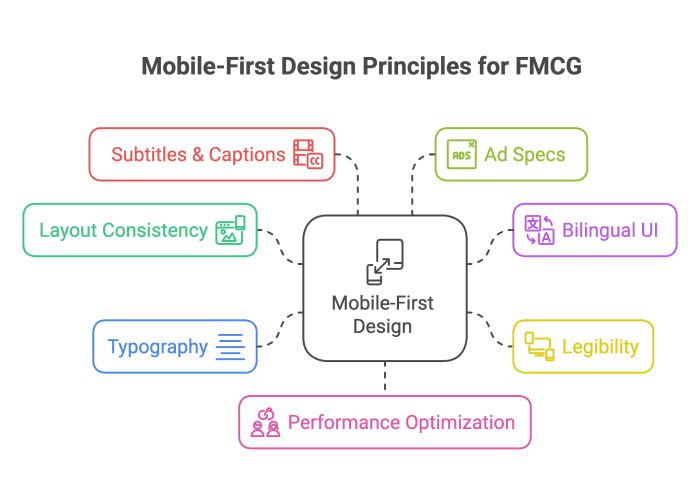
Design for the phone in your buyer’s hand first. That means creating and developing layouts that work on small screens, notches, and overlays, and that function well in both Arabic and English. Start with a consistent grid, then respect safe areas so UI elements like status bars, CTAs, and captions never obscure key visuals. Apple’s safe area concept is a helpful model, and on ad platforms, you should also place text and logos within the platform’s creative safe zones (for example, TikTok’s Arabic safe-zone templates).
For bilingual markets, mirror the UI when the primary language is right-to-left (RTL). Material Design’s bidirectionality clarifies which elements change, such as hierarchy, arrows, and progress direction, and which stay the same, like numbers and non-directional icons. For typographic details such as digit direction, numeral styles, and joining behavior, refer to W3C’s Arabic layout standards when setting rules for Arabic text and numerals.
Legibility takes priority over ornamentation on small screens. Ensure overlay text remains readable over video and photography by maintaining minimum contrast ratios (4.5:1 for body text; 3:1 for large text), and treat key graphical cues (icons, focus states, dividers) as non-text contrast elements that also need to meet a 3:1 contrast ratio. On touch surfaces, avoid tiny tappable elements. WCAG’s target size guidance (approximately 44 × 44 CSS pixels) serves as a solid baseline. These practices enhance accessibility, improve understanding in fast-scroll feeds, and reduce creative fatigue across various placements.
Typography needs a bilingual plan. In mixed AR↔EN experiences, set reading direction per block, not per page, and select Arabic typefaces with clear joining behavior and strong strokes. Treat Arabic body copy at sizes that maintain a consistent x-height with Latin (designers often opt for sizes similar to iOS body text rather than small caption tiers), and monitor line height to prevent Arabic from appearing cramped when paired with English.
When adding subtitles to a video, follow proven broadcast-grade guidelines: limit to two lines and keep line length concise (approximately 42 characters per line is a common maximum). When including both languages, prioritize Arabic as the main caption with brief English reinforcement, or vice versa, depending on the audience split.
Specs are not guesses; anchor creatives to official ad specs and create a reusable checklist for each channel. For social short-form, vertical 9:16 is the default; refer to TikTok in-feed specs (dimensions, bitrate, safe-zone downloads including Arabic RTL), Meta Ads Guide for feed/in-stream video (durations, codecs, file limits), and YouTube/Google Ads for Shorts, bumpers, and in-stream orientations.
In the article’s appendix, we’ll include a quick spec table; however, always verify against live documentation before export, as platforms are subject to change.
Subtitles and captions should be treated as a product detail, not an afterthought. Burn-in Arabic and English captions for sound-off environments, maintain a brisk pace, and write for easy scanning. A practical benchmark is the Netflix Arabic timed-text standard, which features a maximum of two lines, concise line lengths, and clean punctuation. That level of discipline prevents overlays from colliding with UI elements and improves understanding in quick 6–10 second cuts.
Ultimately, performance is an integral part of the creative process. Lightweight assets load faster, which improves downstream metrics on PDPs and landing pages. Set a performance budget for marketing pages and monitor it. Page weight, requests, and Core Web Vitals. On mobile, aim for lean initial payloads and strict response/animation budgets, and compress media properly before upload rather than relying on the ad platform to fix heavy files. Fast pages and small files ensure your creative gets seen and engaged with, rather than abandoned mid-load.
When producing assets, refer to TikTok’s in-feed specs and Arabic safe zones, Meta’s Ads Guide for placements, and YouTube/Google Ads format guidance as you export and QA each deliverable.
Measuring Creative Effectiveness by Phase
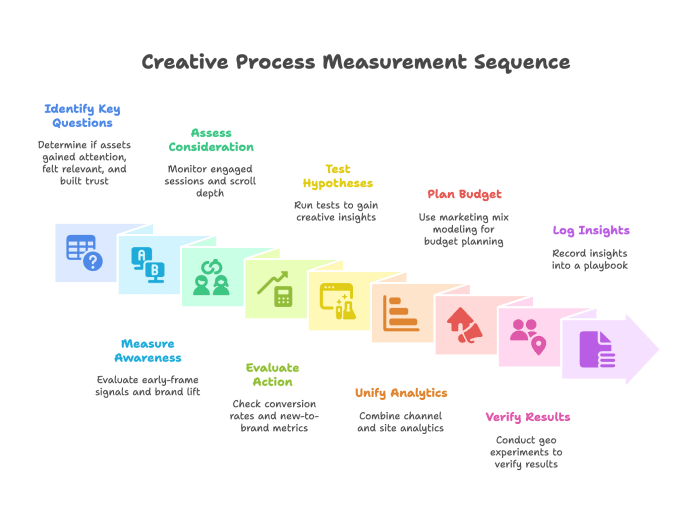
Measurement is a vital part of the creative process, not an afterthought. In a non-linear journey, the key question is whether your assets gained attention, felt relevant, and built enough trust to move someone forward. On YouTube, this is evident through Brand Lift for recall and consideration, as well as Creative Analytics, which helps identify where viewers drop off. On Meta, you can demonstrate causality with randomized Conversion and Brand Lift studies. On Amazon, you can see if lower-funnel ads are actually driving growth for the franchise with new-to-brand metrics.
Awareness
At the beginning of the journey, you’re confirming that ads effectively capture attention. Review early-frame signals (thumb-stop, 3s/10s views, VTR) along with brand lift to avoid optimizing for vanity metrics. YouTube also tracks engaged-view conversions when someone watches 10 seconds or more of a skippable ad, doesn’t click, but converts shortly after, providing a clearer picture than traditional view-through metrics. Combine this with Brand Lift to see if people actually remember you.
Consideration
Mid-funnel creative should minimize cognitive load and make reasons to believe memorable. Outside the platform UI, verify quality traffic with GA4: monitor engaged sessions and interpret engagement rate (both tied to a 10-second/2-page minimum), and set scroll beyond the default 90% fire if you need richer depth bands. These on-site signals show whether your carousel/video story effectively carried through to the LP/PDP.
Action
At the last stage, evaluate whether clarity and offer mechanics are triggering the buy: CVR, ATC, CPP/CPA, and ROAS. Where you sell on Amazon, supplement these with [new-to-brand] to see what percentage of conversions come from first-time customers (helpful for balancing harvesting versus acquisition). If your video is shoppable or linked to a feed, compare click-through conversions with engaged-view conversions to identify non-click viewers who purchase shortly after exposure.
Testing system (keep it light, weekly)
Run 2–3 hypotheses per sprint (e.g., creator hook vs. product-first; icon stack vs. paragraph proof). Allocate a fixed test budget and set clear kill/scale rules (e.g., +X% lift in VTR or CTR at equal spend; CPA guardrails). Use YouTube Brand Lift for quick creative insights, Meta [Conversion Lift] for lower-funnel causality, and geo-tests/MMM to verify results at the market level when scaling.
Analytics stack & cadence
Unify channel dashboards (YouTube/Google Ads, Meta, TikTok) with retail media and site analytics (GA4) so that each phase’s KPIs are displayed side by side. Utilize marketing mix modeling for long-term budget planning, and then conduct geo experiments to verify significant shifts before adjusting your spend. Close the loop with a standing create → learn → decide meeting that logs insights into a playbook, so each new brief starts smarter.
KPI Cheat Sheet (Dashboard Labels)
- Awareness: thumb-stop, 3s/10s view rate, VTR, Brand Lift (recall/awareness).
- Consideration: CTR, engaged views/EVCs, GA4 engaged sessions & scroll/interaction on LP/PDP, branded search lift.
- Action: CVR, ATC, CPP/CPA, ROAS, NTB %
How Lamana Translates Strategy into Visuals
We begin with a Discovery & Influence Map workshop, a sprint to unpack audiences, triggers, barriers, and the touchpoints that truly influence decisions in your category. Instead of forcing a linear funnel, we map journeys around stream, scroll, search, shop, and rank touchpoints based on their ability to generate attention, relevance, and trust. This aligns the entire brief with BCG’s Influence Map and its guide to mapping influence points, ensuring the creative work is targeted where influence actually happens.
From there, we turn insights into creative areas and a message framework organized by phase (Awareness/Consideration/Action) and persona. Each area has one value proposition, one proof point, and one emotional angle, with copy and visual cues documented for AR/EN execution. This framework becomes the baseline for channel-specific storytelling across social, retail media, and search. So, a six-second vertical clip, a carousel, and a PDP hero all deliver the same message. To get a sense of our approach, see Lamana’s Creative Design practice. We also my try to boost your brand with programmatic advertisment.
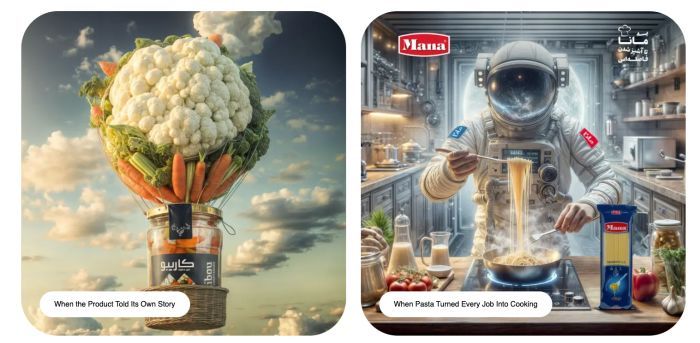
We then develop a modular asset system, consisting of one master and various cut-downs, AR/EN variants, and retailer versions (e.g., Noon, Amazon/Carrefour spec packs). Assets are built from reusable “atoms”: hook, claim, proof, and CTA. This allows us to remix assets without requiring reshoots and ensures that DBAs (color, logo, sonic) remain consistent. Consequently, we can deliver quickly to meet modern campaign demands while preserving brand coherence. Our project case studies, like Mogu Mogu and Caribou, demonstrate how we extend a master narrative across multiple surfaces.
Production follows a playbook that includes motion templates for short-form videos, DBA guardrails to ensure every cut stays on-brand, UGC sourcing and creator briefings, and voiceover localization with dialect options (Khaleeji/Levant/Egyptian). We combine this with channel QA and spec locks so exports are accurate the first time. When a campaign spans phygital or OOH, we keep the story system consistent. View the integrated work that merges digital, retail, and activations, as seen in external coverage of our MENA campaigns.
Activation is followed by QA and governance steps: verifying per-channel specifications, conducting bilingual checks, and performing brand/legal reviews before launch. After going live, spot checks are conducted across various placements, including feed, stories, Shorts, retail media units, and PDP image stacks. Since the brief was created from an Influence Map, creative and media efforts focus on high-influence touchpoints rather than just high-reach ones, which reduces wasted iterations and ensures tests are purposeful.
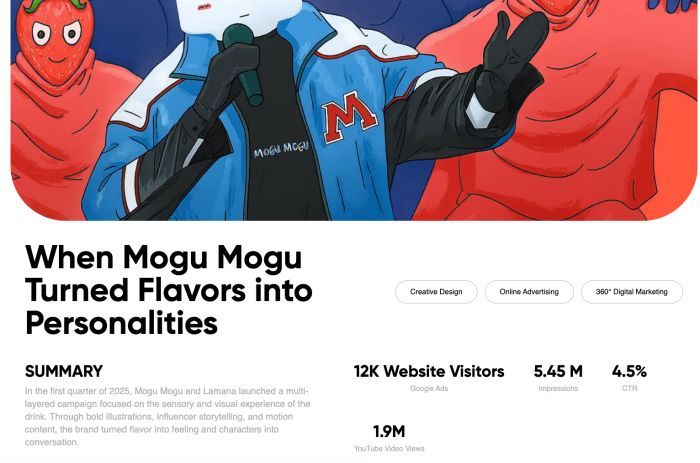
Finally, we run a performance loop: weekly readouts, a prioritized hypothesis backlog, and rapid iteration. Each sprint tests 2–3 variables (e.g., creator-hook vs. product-first; benefit icon stack vs. paragraph proof; green price tile vs. per-unit sticker). Winners scale; fatigued assets retire; and learnings roll back into the message matrix so the system gets smarter every week. Our About page outlines how we structure teams and skills to deliver this cadence for FMCG brands across the region.
An example of systematic design by Lamana digital marketing agency
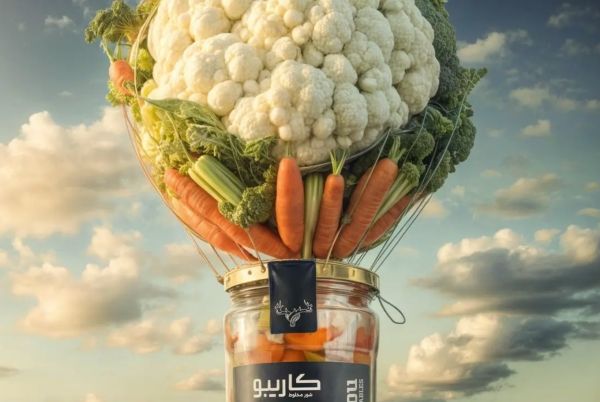
When your section turns from method to execution, point to how Lamana operationalizes a modular creative system. For Caribou, Lamana shipped six product-centric videos (live-action, animation, stop-motion) plus nine graphic designs, then activated a creator layer Delivering ~7.6M reach, ~881K engagements, and +8K followers, with zero paid media on TikTok/YouTube. This shows how a tight design language can scale organically before you add performance spend
What we need from clients to move quickly and stay accurate
- Objectives & budgets by phase (Awareness/Consideration/Action).
- Brand codes & assets (logo/lockups, color, sonic, packaging renders as cues).
- Claims & substantiation (legal-approved benefit/proof language).
- Retail priorities (channels/retailers, PDP constraints, promo calendar).
- Guardrails (markets, dialect preferences, must-avoid topics or imagery).
This operating model tightly links strategy, creative, and media. So each visual we deliver has a purpose on the journey and clear rules for scaling.
Conclusion: Design Is a Growth Engine
In MENA’s non-linear journeys, design isn’t just decoration; it’s the operating system that guides shoppers from scroll to purchase. The brands that succeed view creativity as a digital-first growth driver, planned around an Influence Map rather than a strict funnel. They focus on the touchpoints that truly influence decisions and coordinate assets across the Awareness, Consideration, and Action stages. Packaging still plays a role, mainly as a cue (thumbnail/hero, unboxing), while the story and benefits carry the main weight on mobile surfaces.
Operationally, that means modular, channel-native assets built from hooks, claims, proofs, and CTAs that remain consistent from short-form video to PDP. It also involves measurements that demonstrate creative impact at each step: Brand Lift and engaged-view conversions for upper- and mid-funnel video; GA4’s engaged sessions and on-page interactions for consideration; and ROAS, CVR, and new-to-brand conversions to confirm that lower-funnel efforts are expanding the franchise, not just capturing demand. Creative quality enhances all of this. YouTube’s ABCDs show why branding early and telling one clear story per asset increases both recall and sales likelihood.
A durable advantage in MENA comes from iterative testing and localization. Run weekly create→learn→decide cycles with 2–3 hypotheses, localize for AR/EN and dialect nuances, and anchor seasonal storytelling to Ramadan, Eid, and national moments. Use marketing-mix modeling and geo-tests where scale allows to validate large budget shifts. Do this consistently, and the design becomes a growing asset that moves across channels, markets, and seasons while influencing every phase of the journey.


